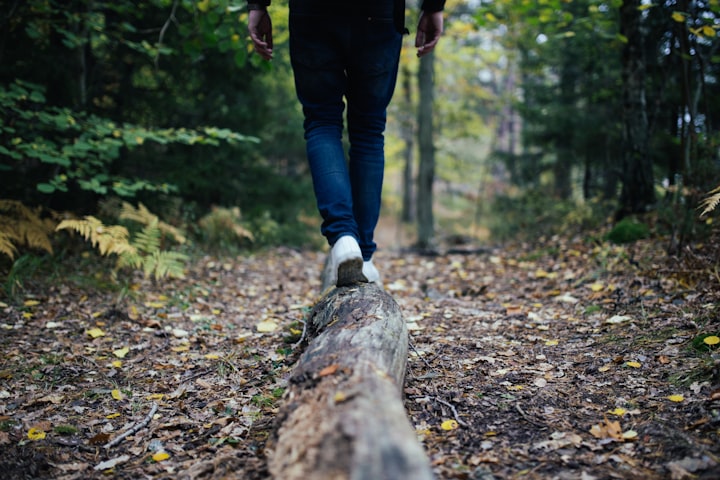The Legacy of Ray Jardine: Pioneer of Ultralight Backpacking
When it comes to the world of ultralight backpacking, few names are as synonymous with the philosophy and practice as Ray Jardine. A multi-talented outdoor enthusiast, engineer, and author, Jardine has radically influenced how people view and engage with outdoor adventures.

Introduction
When it comes to the world of ultralight backpacking, few names are as synonymous with the philosophy and practice as Ray Jardine. A multi-talented outdoor enthusiast, engineer, and author, Jardine has radically influenced how people view and engage with outdoor adventures. This introductory serves as a preamble to a series of sections exploring Jardine's teachings in-depth, revealing the transformative impact he has had on the community of ultralight backpackers.
Who is Ray Jardine?
Ray Jardine is an American outdoor adventurer and author known for popularizing ultralight backpacking. He gained recognition in the 1990s after completing numerous long-distance hikes with gear he designed and built himself. His self-developed techniques and tools laid the foundation for an entirely new approach to backpacking, emphasizing minimalism, DIY ethics, and a deep connection with nature.
Contributions to Ultralight Backpacking
Jardine's work has extended beyond simple weight-saving hacks; it involves a comprehensive philosophy about the nature of outdoor experiences. His book, "The Pacific Crest Trail Hiker's Handbook," was a groundbreaking work that articulated this new approach. It was here that many of his principles around the "Big Three" (shelter, sleeping system, and backpack), DIY gear, and tarp camping were first shared, profoundly influencing a new generation of backpackers.
Ray Jardine's ultralight philosophy extends beyond gear and techniques; it's deeply rooted in a holistic view of the human experience in the wild. His teachings force backpackers to be more conscious, more skilled, and, in essence, more human. He advocates for a lean approach not just to cut down physical weight but to remove the mental weight that cluttered gear and complex systems can bring.
The Sections Ahead
This article dives into three key areas, each divided into its own section, where Jardine's influence has been monumental:
- Mastering the "Big Three": Your shelter, sleeping system, and backpack
- The Jardine Way: The impact and utility of DIY gear
- Beyond Tents: The liberation offered by tarp camping
Each section aims to shed light on the intricate details and practical applications of Jardine's teachings.
1. Mastering the "Big Three": Your shelter, sleeping system, and backpack
Introduction
When it comes to ultralight backpacking, Ray Jardine's advice is often seen as the gold standard. His teachings are influential and his guidance on mastering the 'Big Three'—your shelter, sleep system, and backpack—is game-changing. This section delves into how Jardine's philosophy can revolutionize your approach to these crucial elements.
The Big Three Explained
The "Big Three" are typically the heaviest and most critical pieces in your gear list. By making strategic choices in these areas, you can drastically lighten your load without compromising your comfort or safety. The focus here is on how Ray Jardine's principles apply directly to optimizing each component of the Big Three.
Shelter: The Rise of the Tarp
Jardine popularized tarp camping within the ultralight community. He pushes for a minimalistic flat tarp setup, utilizing natural elements like trees or trekking poles for support. This doesn't just offer substantial weight savings over traditional tents, it also aligns with his philosophy of engaging more directly with the natural world.
The Sleep System Revolution
Jardine strongly prefers quilts over traditional sleeping bags for their versatility and significant weight reduction. They can be adjusted easily for ventilation or cinched tightly for added warmth. His approach here again reiterates his mantra that less can often be more, as quilts offer comparable warmth and comfort but at a fraction of the weight and bulk.
The Backpack Paradigm
Heeding Jardine's advice, the ideal backpack lacks extraneous pockets, compartments, and a heavy frame. He often endorses homemade packs crafted from lightweight materials, and the absence of unnecessary features is key to reducing the pack's weight. This minimalist approach ensures a more enjoyable hiking experience, further exemplifying Jardine's overarching philosophy of simplification and efficiency.
Recap
Ray Jardine’s teachings on the Big Three have been a cornerstone in the world of ultralight backpacking. Implementing his advice doesn't just lighten your pack; it invites you to interact with the wilderness in a more enriched and intimate way. By aligning your gear choices with his principles, you're not only making your backpack lighter but also adopting a new perspective that can deeply enhance your relationship with the great outdoors.
2. The Jardine Way: The impact and utility of DIY gear
Introduction
Ray Jardine's DIY (Do-It-Yourself) ethos is a game-changing approach that's been deeply influential in the ultralight backpacking community. This section aims to explore why DIY gear is not just a cost-saving gimmick but a philosophical stance, as endorsed by Jardine himself.
Why DIY?
Jardine's philosophy contends that making your own gear isn't just about reducing weight; it's also about acquiring a deep-rooted understanding of each item's functionality. By crafting your gear, you're inherently familiar with its every component and its intended role, making you better equipped to troubleshoot issues while on the trail.
Common DIY Gear
The most commonly adopted DIY projects inspired by Jardine include tarp tents, quilts, and backpacks. The beauty of DIY lies in its customization—each project can be tailored to individual specifications, be it dimensions, materials, or special features. This offers a unique opportunity for hikers to be intricately involved in the design and manufacturing process, ensuring their gear is optimally suited for their specific needs.
The Learning Curve
Embarking on a DIY project can seem daunting initially. However, Jardine's approach is grounded in the belief that you don't need to be an expert craftsman to create useful, functional gear. There are numerous resources, guides, and templates available to help even the most inexperienced hiker get started. The learning curve can be steep, but the rewards, both in terms of gear weight and personal satisfaction, are immense.
The Human Aspect
On a human level, there's something incredibly rewarding about using gear that you've made with your own hands. It adds an emotional dimension to the trip, knowing that your comfort and safety are dependent on your own craftsmanship. Moreover, the skills you acquire while creating DIY gear often have broader applicability, enriching not just your hiking experiences but other aspects of life as well.
Recap
Ray Jardine's DIY ethos offers a compelling alternative to commercially available products. It’s not just about crafting gear that's lighter or more suited to your needs, but about fostering a deep understanding of the tools that aid you on your journey. In embracing DIY, you're not just becoming an ultralight backpacker but a more self-reliant and insightful individual.
3. Beyond Tents: The liberation offered by tarp camping
Introduction
Tarp camping is one of the most radical yet effective techniques advocated by Ray Jardine. This section seeks to dive into the nitty-gritty of tarp camping, exploring Jardine's ideas and techniques that make this style of camping a feasible and enriching experience.
Why Tarp Camping?
Jardine's argument for tarp camping rests on its two primary benefits: substantial weight savings and a more immersive experience. In Jardine's view, a well-pitched tarp can offer nearly all the protective features of a tent while saving valuable weight. Moreover, the tarp set-up allows for a closer connection to the natural environment around you, increasing the richness of your outdoor experience.
Techniques and Tips
There's an art and science to tarp camping, and Jardine has been one of its most articulate teachers. A wide array of pitching techniques exists, each suitable for specific weather conditions. Jardine has detailed these techniques in his writings, emphasizing the necessity of practice for perfecting your tarp setup. He argues that your tarp is as good as your ability to pitch it effectively.
Ground Management
When it comes to tarp camping, ground conditions become increasingly critical. Unlike tent camping, where the floor can offer some level of insulation and water-resistance, tarp camping leaves you more exposed. Jardine strongly advocates for carefully assessing elevation and ground surface conditions to ensure that your sleeping area remains dry and comfortable through the night.
The Human Aspect
From a human perspective, tarp camping fosters a deeper engagement with your environment. It forces you to read the landscape more carefully, take stock of weather conditions, and think critically about your choices. All these aspects contribute to not just a lighter backpack but also a more enriched mind. It’s about connecting with nature in a direct way that most modern shelter systems don't allow.
Recap
Ray Jardine's teachings on tarp camping have been transformative for the ultralight backpacking community. Through his insights, tarp camping is no longer viewed as a risky or extreme approach to outdoor shelter but as an innovative way to cut weight and heighten your connection with the environment. For those willing to step out of their comfort zones and tackle the learning curve, the rewards are immense.




